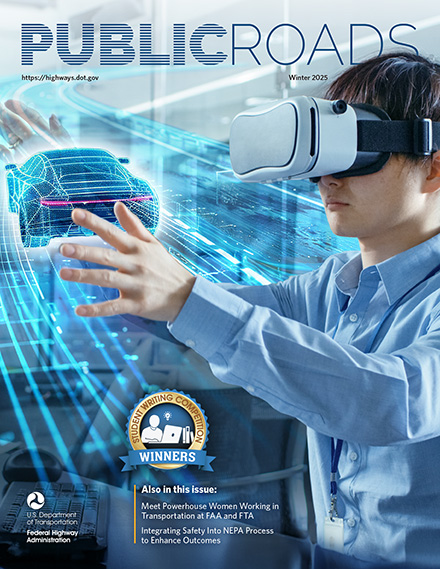Forging Ahead with Innovation!

When young transportation innovators think “big picture” and “how can I make this better?” they make some of the most amazing discoveries—not only in their professional careers but in the industry itself.
Transportation today is full of dedicated researchers, technology, programs, and ideas about how to make our roads, bridges, and infrastructure stronger and more resilient. The industry is also full of promise—with thousands of young men and women entering science, technology, engineering, and mathematics (STEM) careers—looking to make their mark here in the United States and around the world.
According to the National Center for Education Statistics, nearly 790,000 students graduated with an undergraduate or graduate degree in STEM in 2021-2022, the last year that statistics were released. It will be these minds that forge the new path forward in the world of transportation, and it is some of these minds that we recognize here in the pages of Public Roads.
It is with great pleasure that the Federal Highway Administration and Public Roads present the winners of the second Student Writing Competition. As we did for its debut in January 2024, high school, undergraduate, and graduate students studying STEM submitted their articles during the spring of 2024, resulting in the winning articles that you are about to read. From the next generation of concrete and concrete alternatives to rumble strips and geosynthetics, the four winning students offered insightful and implementable ideas valuable to transportation professionals who are working to solve today’s—and tomorrow’s—biggest challenges.
Thank you to all the students who participated in our sophomore effort and congratulations to the winners!
The following articles were written by students as part of the Public Roads Student Writing Competition. The views and opinions expressed in these articles are the authors and do not necessarily reflect those of FHWA or the U.S. Department of Transportation (USDOT). The contents do not necessarily reflect the official policy of the USDOT.

